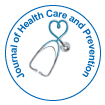The Impact of Smoking During Pregnancy: Risks, Challenges, and Strategies for Cessation
Received: 01-Mar-2025 / Manuscript No. jhcpn-25-163697 / Editor assigned: 03-Mar-2025 / PreQC No. jhcpn-25-163697(PQ) / Reviewed: 17-Mar-2025 / QC No. jhcpn-25-163697 / Revised: 22-Mar-2024 / Manuscript No. jhcpn-25-163697(R) / Published Date: 28-Mar-2025
Abstract
Smoking during pregnancy remains a critical public health concern, with significant consequences for both maternal and fetal health. Despite the known risks, approximately 7.2% of pregnant women in the United States continue to smoke, contributing to a range of complications. Maternal risks include ectopic pregnancies, placental issues, and preterm labor, while fetal risks include low birth weight, congenital abnormalities, and fetal growth restriction. Babies born to mothers who smoke also face increased risks for Sudden Infant Death Syndrome (SIDS) and respiratory problems. The harmful effects of smoking during pregnancy are primarily caused by toxic chemicals, particularly nicotine and carbon monoxide, which restrict blood flow to the placenta, depriving the fetus of essential nutrients and oxygen. Quitting smoking is crucial to reducing these risks, with evidence showing that both reducing cigarette consumption and quitting entirely can improve pregnancy outcomes. Effective smoking cessation strategies during pregnancy include behavioral support, counseling, and, when appropriate, nicotine replacement therapy.
Introduction
Smoking during pregnancy poses severe health risks for both the mother and the developing fetus, making it a critical public health issue worldwide. Despite growing awareness about the dangers of smoking, a significant percentage of pregnant women continue to smoke, leading to complications during pregnancy, childbirth, and beyond. In the United States, approximately 7.2% of pregnant women reported smoking, underscoring the ongoing challenge of tobacco use during this crucial period. Smoking during pregnancy leads to maternal complications, such as ectopic pregnancies, placental abruption, and preterm labor, all of which jeopardize maternal health and pose risks for the fetus. Fetal consequences of maternal smoking include low birth weight, congenital disabilities, and developmental delays, which can have long-term effects on the child. The toxic chemicals in tobacco smoke, including nicotine and carbon monoxide, impair blood flow to the placenta, limiting oxygen and nutrient delivery to the fetus, which contributes to these adverse outcomes.
Methodology
The study employs a comprehensive approach, utilizing both qualitative and quantitative methods to explore the prevalence, effects, and cessation strategies related to tobacco use among pregnant women. The research comprises several key components: a literature review, survey administration, data analysis, and interviews with healthcare providers. The study begins with an extensive review of existing research on smoking during pregnancy, including peer-reviewed journal articles, governmental reports, and health organization guidelines. This review seeks to gather comprehensive data on the prevalence of smoking in pregnancy, the associated health risks for mothers and infants, and the effectiveness of smoking cessation programs. This phase helps identify gaps in current knowledge and informs the subsequent research stages [1-5].
Discussion
A cross-sectional survey will be administered to pregnant women attending prenatal care clinics. The survey includes questions on demographics, smoking status (current, former, or never-smoked), smoking frequency, and motivations for quitting. It also assesses awareness of smoking-related risks and availability of cessation resources. The survey will be distributed both online and in-person to ensure a diverse participant pool, with a target sample size of 300 participants. The quantitative data from the surveys will be analyzed using statistical software (e.g., SPSS or R). Descriptive statistics will summarize the prevalence of smoking and cessation rates, while inferential statistics (e.g., chi-square tests) will examine correlations between smoking behavior and demographic factors. Logistic regression may also be used to identify factors associated with successful smoking cessation during pregnancy. In-depth interviews will be conducted with healthcare professionals, including obstetricians, midwives, and smoking cessation counselors. These interviews will provide qualitative insights into their experiences addressing smoking in pregnant women, the challenges faced, and the effectiveness of existing cessation programs. Thematic analysis will be used to identify key themes and best practices. Ethical approval will be obtained from the relevant institutional review board before the study begins. All participants will provide informed consent, ensuring confidentiality and the right to withdraw at any stage of the research. Healthcare providers play a crucial role in assisting pregnant women in quitting smoking. Regular screenings for tobacco use during prenatal visits, combined with effective counseling and support, can significantly increase cessation rates. Providers should also offer smoking cessation resources and emphasize the importance of quitting for both maternal and fetal health [6-10].
Conclusion
Smoking during pregnancy presents significant risks to both maternal and fetal health. Understanding these risks, along with the most effective cessation strategies, is essential for healthcare providers and pregnant women alike. By prioritizing smoking cessation and offering the necessary support, we can reduce smoking prevalence among pregnant women and improve outcomes for future generations. It is vital that society fosters an environment that encourages and supports pregnant women in quitting smoking, thereby safeguarding the health of both mothers and their children.
Acknowledgment
None
Conflict of Interest
None
Citation: Sofoulaki SK (2025) The Impact of Smoking during Pregnancy: Risks,Challenges, and Strategies for Cessation. J Health Care Prev, 8: 309.
Copyright: © 2025 Sofoulaki SK. This is an open-access article distributed underthe terms of the Creative Commons Attribution License, which permits unrestricteduse, distribution, and reproduction in any medium, provided the original author andsource are credited.
Select your language of interest to view the total content in your interested language
Share This Article
Recommended Journals
Open Access Journals
Article Usage
- Total views: 348
- [From(publication date): 0-0 - Dec 20, 2025]
- Breakdown by view type
- HTML page views: 273
- PDF downloads: 75
